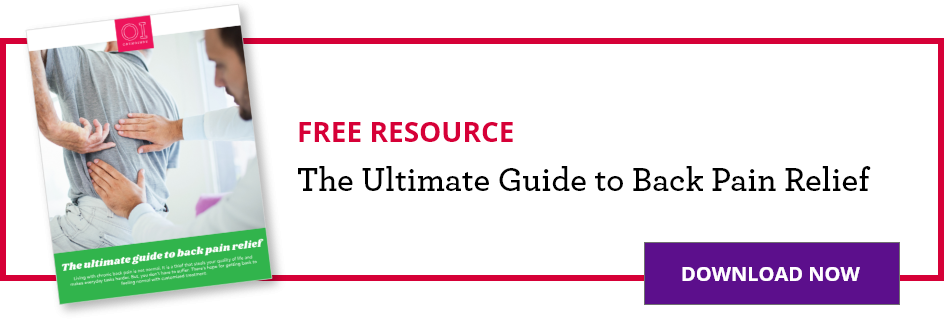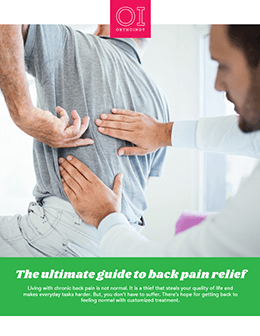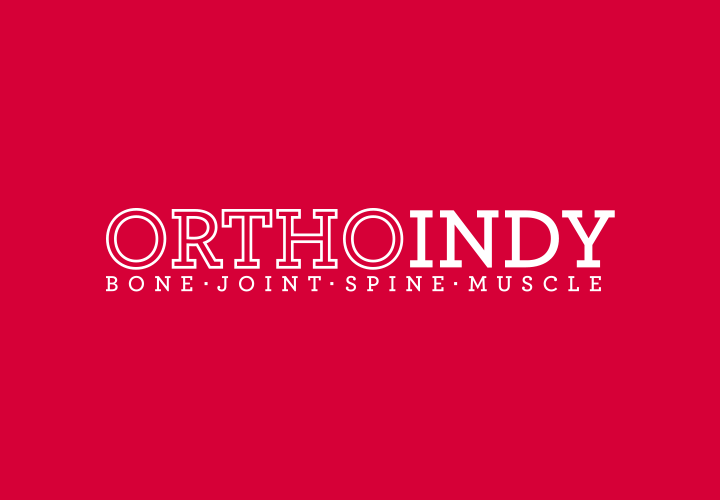THIS POST IS PART OF THE ULTIMATE GUIDE TO BACK PAIN RELIEF
Low back pain is a common condition that most people experience at some point in their lives. There are many lower back pain causes, and the right treatment depends on those underlying factors.
Read on to learn more about lower back pain causes, the symptoms associated with back pain and how to prevent and treat lower back issues.
Anatomy
The spine is made up of 24 bones, called vertebrae, which are stacked on top of one another. These bones connect to protect the spinal cord. The seven small vertebrae that begin at the base of the skull and form the neck comprise the cervical spine.
Your spinal cord and nerves travel through the spinal canal carrying messages between your brain and muscles. The intervertebral discs between your vertebrae are flexible, flat and round discs and are about a half-inch thick.
They act as shock absorbers when you walk or run and allow motion between the vertebrae.
Lower back pain causes
Because low back pain is so common, it also means there are many causes. Some of the most common lower back pain causes include:
- Degenerative spondylolisthesis
- Spinal stenosis
- Scoliosis
- Sacroiliac joint dysfunction
- Degenerative disc disease
- Facet arthritis
- Stress fractures/pars fractures
- Muscle strain/muscle weakness
- Isthmic spondylolisthesis

What symptoms associated with back pain should prompt you to see a doctor?
Common lower back pain causes are often troubling but do not require urgent medical care. These symptoms of pain may vary from mild to extreme.
- Pain can occur slowly or suddenly
- Pain that is dull or achy
- Pain may be constant or come and go
- Pain may be worse when bending and lifting
- Pain that worsens when sitting, standing or walking
- Pain that improves when lying down or reclining
Some symptoms may indicate more serious lower back pain causes that require urgent attention from a physician.
- Pain associated with a fever of 101 degrees or higher
- Pain after an accident such as a fall
- Severe pain in patients with a history of cancer
- Pain that radiates into the leg with a sudden loss of function in the leg or loss of the ability to control bowel or bladder function.
Physician examination
To treat your pain your physician will ask you for your complete medical history and have you describe your symptoms. A physical examination will also be performed.
The physician may look at your back and push different areas to see if it hurts. An imaging test such as an X-ray, CT scan, MRI, bone scan, or bone density test may be necessary to diagnose your lower back pain causes.
MAKE AN APPOINTMENT WITH AN ORTHOINDY SPINE SURGEON
What is the best treatment for lower back pain?
Different lower back pain causes will require different treatments. In general, treatment will start with nonsurgical options such as:
- Physical therapy
- Non-steroidal anti-inflammatory drugs such as ibuprofen, aspirin or muscle relaxants
- Narcotic pain medication may help
- Steroids either taken orally or injected into the spine (make an appointment with an OrthoIndy Non-operative Pain Management Physician)
- Braces
- Chiropractic therapy
- At-home exercises or stretching techniques
- Weight control
- Smoking cessation
- Regular aerobic activity
If a patient does not feel relief after a period of time they may benefit from injections or possibly surgery.
Determining the best course of action is based on establishing the correct diagnosis for the lower back pain causes and then creating the plan most appropriate for the patient and their diagnosis.
What can I do to prevent lower back pain causes?
- Exercise
- Proper lifting
- Healthy weight maintenance
- Avoiding smoking
- Proper posture
Learn more about treatment options for neck and back pain at OrthoIndy.
Schedule an appointment
Your well-being is important to us. Our team can help diagnose your lower back pain causes, and get you the relief you deserve. Schedule online or call us to set up an appointment with one of our orthopedic specialists.
If your injury or condition is recent, you can walk right into one of our OrthoIndy Urgent Care locations for immediate care. For rehabilitation and physical therapy, no referral is needed to see one of our physical therapists.

Get the Ultimate Guide to Back Pain Relief
Our comprehensive guide will help you understand back pain and its different causes, like sciatica, herniated disk, scoliosis, pinched nerves and more.





